You’ll discover that Kansas native plants transform ordinary landscapes into stunning displays of natural beauty, but choosing the wrong species can lead to disappointing results. Purple Prairie Clover blooms for 8-10 weeks starting in June, while Black-Eyed Susans provide continuous color from July through September. These aren’t just pretty faces, though. Each plant serves specific ecological functions that’ll determine whether your garden thrives or struggles through Kansas’ unpredictable weather patterns.
Contents
- 1 Kansas’ Diverse Prairie Ecosystems
- 2 Vibrant Wildflowers for Kansas
- 3 Kansas Native Trees That Thrive
- 4 Hardy Kansas Native Shrubs
- 5 Selecting the Right Native Plants for Your Garden
- 6 Frequently Asked Questions
- 6.1 How Do I Find Native Plant Seeds or Seedlings in Kansas?
- 6.2 What’s the Best Time of Year to Plant Native Species?
- 6.3 How Much Do Native Plants Typically Cost Compared to Non-Natives?
- 6.4 Do Native Plants Require Special Soil Preparation or Fertilizers?
- 6.5 How Long Does It Take for Native Plants to Establish?
Kansas’ Diverse Prairie Ecosystems
When you drive across Kansas, you’ll witness one of North America’s most impressive natural changes as three distinct prairie ecosystems blend seamlessly into each other. In eastern Kansas, you’ll see tallgrass prairies where big bluestem and Indian grass tower up to eight feet tall. Moving west, midgrass prairies take over with side-oats grama and wheatgrass creating mixed communities. Finally, shortgrass prairie dominates the western regions with ankle-high buffalo grass. This ecosystem resilience allows different grasses to thrive based on rainfall patterns and soil conditions, making prairie conservation efforts essential for maintaining biodiversity. The Flint Hills region preserves some of the last remaining tallgrass prairie habitat, representing less than 4% of the original 170 million acres that once stretched across the continent.
Vibrant Wildflowers for Kansas
Kansas prairies showcase over 1,600 native wildflower species in stunning arrays of yellow, red, orange, pink, blue, purple, violet, white, and cream throughout the growing seasons. These diverse species include forbs, which are herbaceous flowering plants that form the foundation of Kansas’s vibrant prairie ecosystems.
Purple Prairie Clover

Purple Prairie Clover is a stunning native wildflower that brings vibrant rose-purple blooms to Kansas landscapes from June through September. This compact perennial legume grows 1-3 feet tall with distinctive cylindrical flower heads atop wiry stems. As one of North America’s most widespread prairie clovers, it serves dual purposes as both an ornamental plant and ecological powerhouse.
Beyond its beautiful summer floral display, Purple Prairie Clover functions as a nitrogen-fixing soil enhancer and pollinator magnet. Its deep root system extends up to 24 inches, providing excellent soil stability while supporting diverse wildlife through protein-rich forage and seed production for birds and small mammals. The plant shows particular value to native bees, bumblebees, and honeybees as a key nectar source.
- Hardiness: Native to Kansas and 25+ other states; highly adaptable to varying climates
- Light: Full sun; thrives in open prairie and dry hill environments
- Water: Moderate drought tolerance; established plants require minimal supplemental watering
- Soil: Highly adaptable to varying soil types; well-draining soils preferred
- Fertilizer: No fertilization needed; actually improves soil through nitrogen fixation
- Pest/Disease Resistance: Excellent natural resistance; few pest or disease issues
- Growth Rate: Medium seedling vigor; establishes slowly but forms long-lived colonies
Black-Eyed Susan
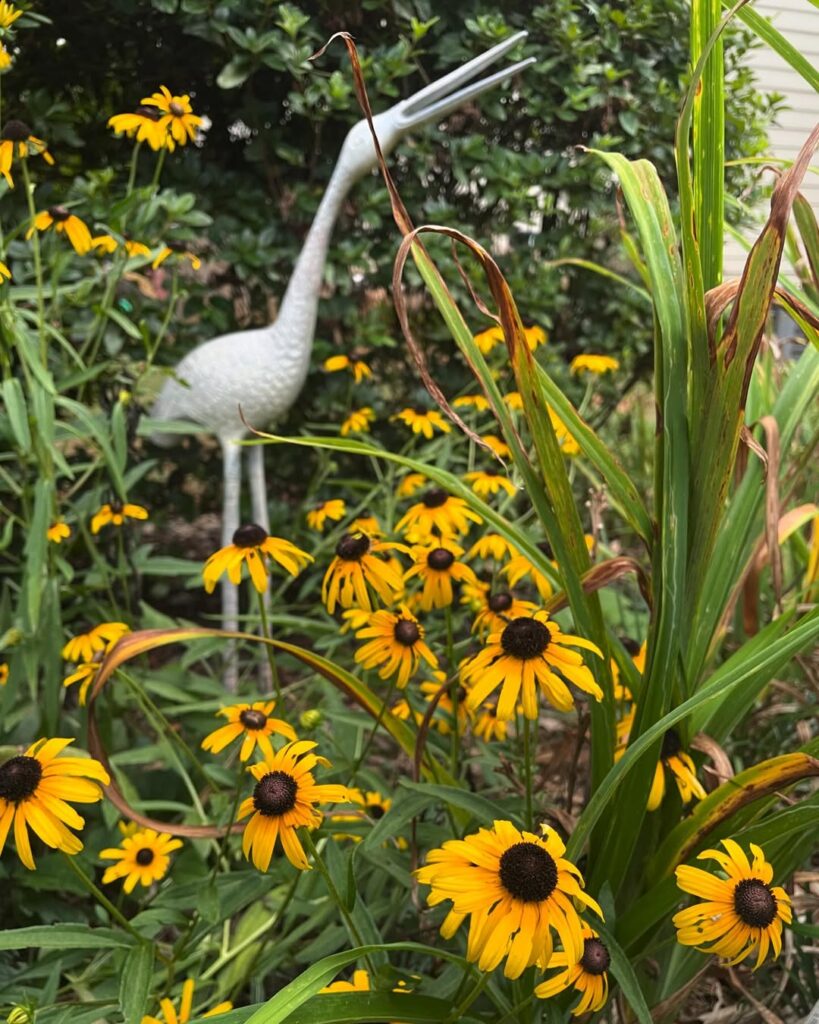
Black-Eyed Susan is a quintessential Kansas wildflower that brings vibrant yellow-orange blooms to prairies and gardens from May through October. This adaptable native grows 1-3 feet tall with distinctive daisy-like flowers featuring bright petals surrounding dark brown centers. As a biennial or short-lived perennial, it self-seeds readily and provides essential nectar for pollinators while adding classic prairie beauty to landscapes.
Beyond its striking appearance, Black-Eyed Susan serves as an ecological cornerstone, supporting native bees, butterflies, and birds while contributing to prairie restoration efforts. Its drought tolerance and minimal maintenance requirements make it ideal for sustainable landscaping and erosion control throughout Kansas. The plant’s presence on disturbed prairies and waste ground demonstrates its resilience and adaptability to various environmental conditions.
- Hardiness: Kansas native, tolerates variable conditions as biennial/short-lived perennial
- Light: Full sun
- Water: Drought tolerant; occasional watering improves flowering in dry years
- Soil: Wide range of well-drained soils; avoid persistently wet areas
- Fertilizer: Minimal requirements; thrives in native prairie conditions
- Pest/Disease Resistance: Generally resilient with few serious issues
- Growth Rate: Moderate; self-seeds abundantly for natural regeneration
Wild Bergamot

Wild Bergamot is a native Kansas perennial mint that brings vibrant color and ecological value to prairie landscapes. This hardy wildflower produces clusters of fragrant lavender to pinkish tubular flowers throughout summer, growing up to 3 feet tall with aromatic gray-green leaves. Beyond its ornamental appeal, Wild Bergamot serves as a vital pollinator magnet, attracting native bees, butterflies, and beneficial insects while supporting biodiversity.
Historically valued by Native Americans for medicinal uses and tea-making, Wild Bergamot remains a low-maintenance garden staple. Its persistent winter seedheads provide year-round interest, making it ideal for wildflower meadows, restoration projects, and pollinator gardens across the Great Plains. The plant’s distinctive 4-sided stems are erect and clustered, often branching above to create an attractive architectural form.
- Hardiness: USDA zones 3a-8b, excellent drought tolerance
- Light: Full sun to partial shade
- Water: Low to moderate; drought-tolerant once established
- Soil: Adaptable to poor to average quality soils, various soil types
- Fertilizer: Minimal fertilizer requirements
- Pest/Disease Resistance: Deer-resistant, generally pest-free
- Growth Rate: Moderate growth rate, spreads naturally in suitable conditions
Kansas Gayfeather
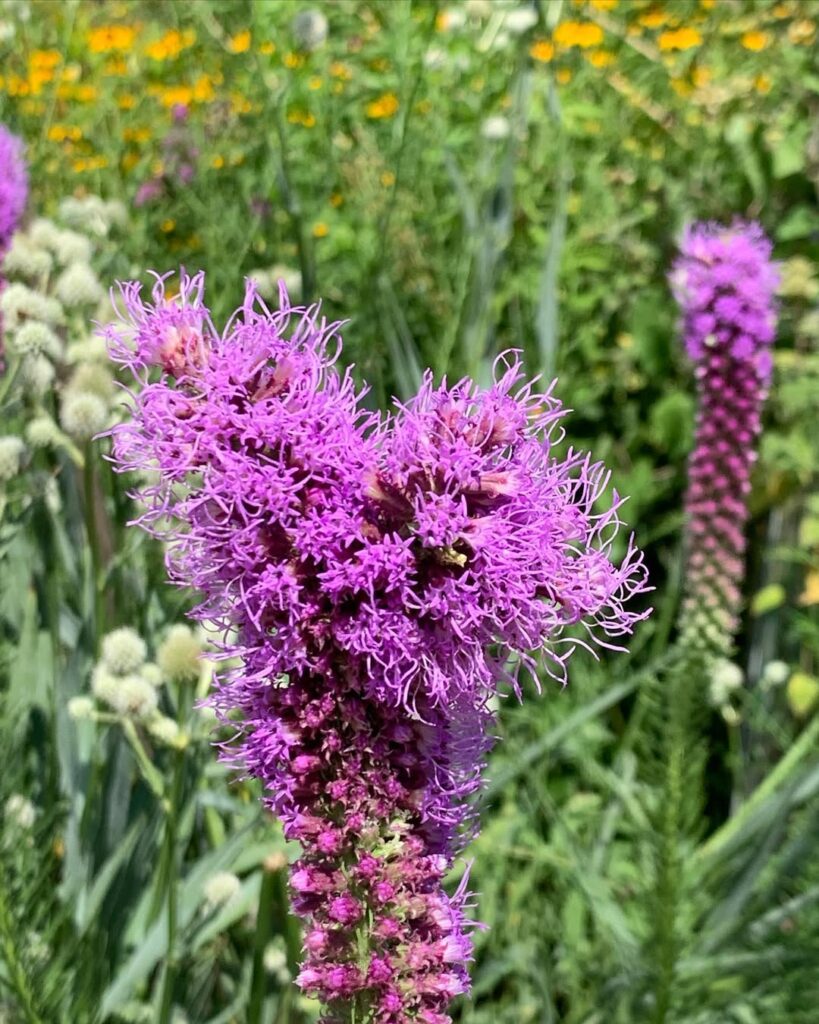
Kansas Gayfeather, also known as Blazing Star, is a striking native perennial that adds dramatic vertical interest to Kansas landscapes. This wildflower produces unusual bottlebrush-like spikes adorned with tiny star-shaped flowers in shades of pink to reddish purple. The blooms uniquely open from top to bottom, creating an eye-catching display that attracts butterflies and makes excellent cut flowers.
The plant’s grass-like foliage remains attractive throughout the growing season, turning rich bronze in fall. Growing 2-5 feet tall, Kansas Gayfeather thrives in prairie gardens, naturalized areas, and perennial borders where it provides beautiful contrast to mounded plants and complements prairie grasses perfectly. For best results, plant corms in spring after the last frost, spacing them 12-15 inches apart at a depth of 2-4 inches.
- Hardiness: USDA zones 3-9
- Light: Full sun to partial shade
- Water: Low to medium; drought tolerant once established
- Soil: Well-drained, slightly acidic preferred but adapts to many soil types including clay
- Fertilizer: Low fertility requirements; thrives in poor soils
- Pest/Disease Resistance: Generally pest and disease free
- Growth Rate: Moderate; reaches mature size in 2-3 years
Wild Indigo
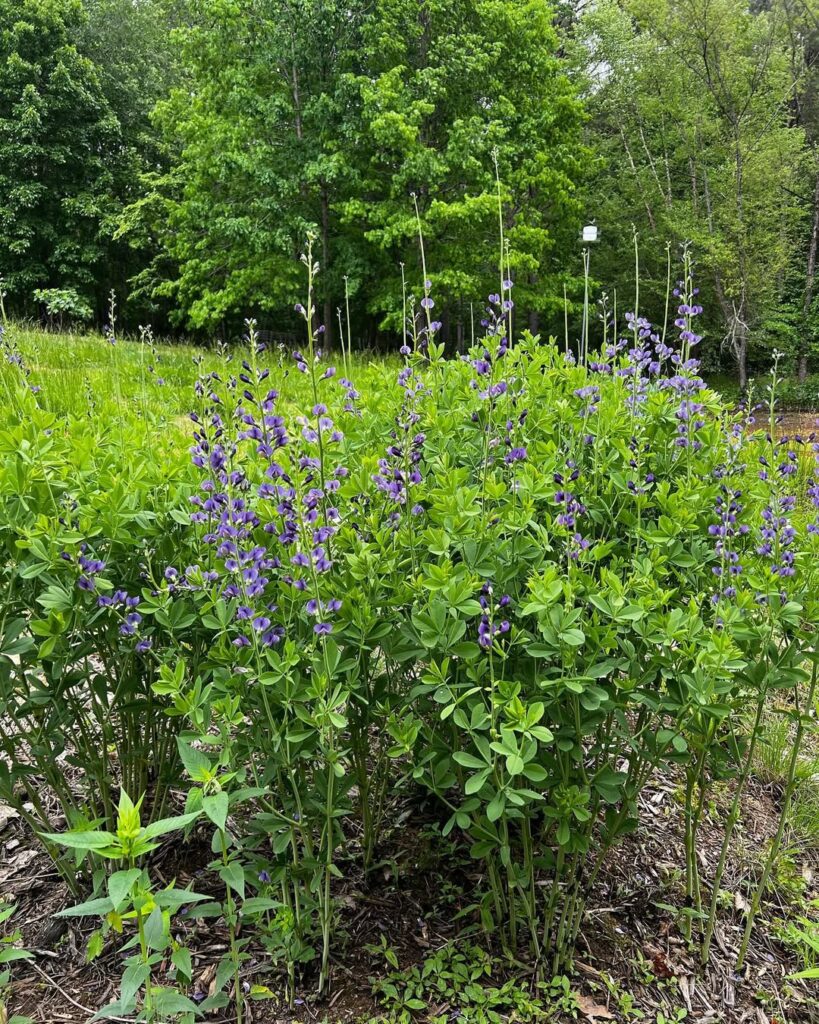
Wild Indigo stands out as one of Kansas’s most striking native wildflowers, earning recognition as the 2020 Kansas Native Plant of the Year. This robust perennial produces dramatic spikes of blue to violet-purple, pea-like flowers that create stunning displays from April through July. Growing 3-6 feet tall with compound blue-green leaves, Wild Indigo adds both height and vibrant color to native landscapes.
Beyond its ornamental appeal, Wild Indigo provides exceptional ecological benefits as a nitrogen-fixing legume that enriches soil while supporting native pollinators and wildlife. Its deep root system enhances drought tolerance and prevents erosion, making it ideal for prairie restoration projects. The plant requires minimal maintenance once established and offers year-round interest with attractive seed pods that persist through winter. This long-lived perennial demonstrates remarkable durability, tolerating challenging conditions from drought to flooding while thriving in heavy clay soils.
- Hardiness: Cold tolerant, suitable for Kansas climate zones
- Light: Full sun
- Water: Drought tolerant once established, prefers moderate moisture
- Soil: Well-drained clay soils, adaptable to various soil types
- Fertilizer: None needed due to nitrogen-fixing ability
- Pest/Disease Resistance: Deer resistant, highly resistant to most pests and diseases
- Growth Rate: Moderate, perennial with multi-year lifespan
Kansas Native Trees That Thrive
Kansas boasts diverse native trees perfectly adapted to local conditions, from towering shade providers and colorful ornamentals to productive fruit-bearing species and hardy drought-resistant varieties. The Kansas Forest Service provides technical assistance to help landowners select and manage the most suitable native species for their specific locations.
Eastern Redbud

The Eastern Redbud is a stunning native deciduous tree that brings early spring color to Kansas landscapes. This small to medium-sized tree reaches 20-30 feet tall and wide, featuring distinctive heart-shaped leaves and showy magenta-pink flowers that bloom directly on branches and sometimes the trunk before leaves emerge.
As one of the earliest bloomers in Kansas, Eastern Redbud provides essential early-season nectar for long-tongued bees and other pollinators. Its fast growth rate of approximately 2 feet per year and umbrella-like crown make it an excellent ornamental choice for showcasing native Kansas beauty while supporting local biodiversity. The tree forms a beneficial symbiosis with nitrogen-fixing bacteria in its root system, enriching the soil naturally.
- Hardiness: USDA zones 4-8, native to eastern Kansas
- Light: Full sun to partial shade
- Water: Moderate water needs, drought tolerant once established
- Soil: Well-draining, adaptable to various soil types
- Fertilizer: Low maintenance, typically does not require fertilization
- Pest/Disease Resistance: Generally resistant with few serious issues
- Growth Rate: Fast, approximately 2 feet per year under ideal conditions
Bur Oak

The Bur Oak stands as one of Kansas’s most resilient native trees, capable of reaching impressive heights of 80-100 feet with equally broad crowns. This mighty oak thrives across the harsh prairie environment, from the Black Hills to central Oklahoma, thanks to its exceptional drought tolerance and deep root system that can extend 4.5 feet in just the first year.
Distinguished by its massive trunk, deeply furrowed bark, and large leathery leaves up to 9 inches long, the Bur Oak provides critical wildlife habitat through its substantial acorns and broad canopy. Its remarkable adaptability to prairie fires, extreme weather, and various soil conditions makes it invaluable for windbreaks, prairie restoration, and establishing historic oak savannas throughout Kansas ecosystems. The tree’s monoecious flowering system produces both male and female flowers on the same tree, with distinctive catkin inflorescences appearing in spring.
- Hardiness: Zones 3-8, exceptional cold tolerance surpassing all other North American oak species
- Light: Full sun
- Water: Drought tolerant once established, deep taproot accesses soil moisture
- Soil: Adaptable to various soil types including upland prairies and bottomlands
- Fertilizer: Low maintenance, typically does not require fertilization
- Pest/Disease Resistance: Highly resistant to most serious pests and diseases
- Growth Rate: Moderate to slow
American Elm

The American Elm was once the premier street tree across the eastern United States, creating magnificent arched canopies over city streets with its distinctive vase-shaped crown. This hardy native reaches impressive heights of 40-98 feet and displays brilliant yellow fall foliage. Though Dutch Elm disease devastated populations, disease-resistant varieties like ‘Princeton,’ ‘Valley Forge,’ and ‘New Harmony’ are enabling this iconic tree to make a comeback in Kansas landscapes.
These majestic trees are valued for their fast growth, stress tolerance, and ability to provide excellent shade with their high, spreading canopy that allows airflow underneath. The deeply furrowed bark displays an ashy-gray color with distinctive short, narrow diagonal ridges that add visual interest to the winter landscape.
- Hardiness: Zones 2-9, very cold hardy and stress-tolerant
- Light: Full sun to partial shade
- Water: Moderate water needs, drought tolerant once established
- Soil: Adaptable to various soil types, prefers well-drained conditions
- Fertilizer: Low maintenance, minimal fertilizer requirements
- Pest/Disease Resistance: Choose disease-resistant varieties for Dutch Elm disease protection
- Growth Rate: Fast-growing, reaches maturity in approximately 150 years
Eastern Cottonwood
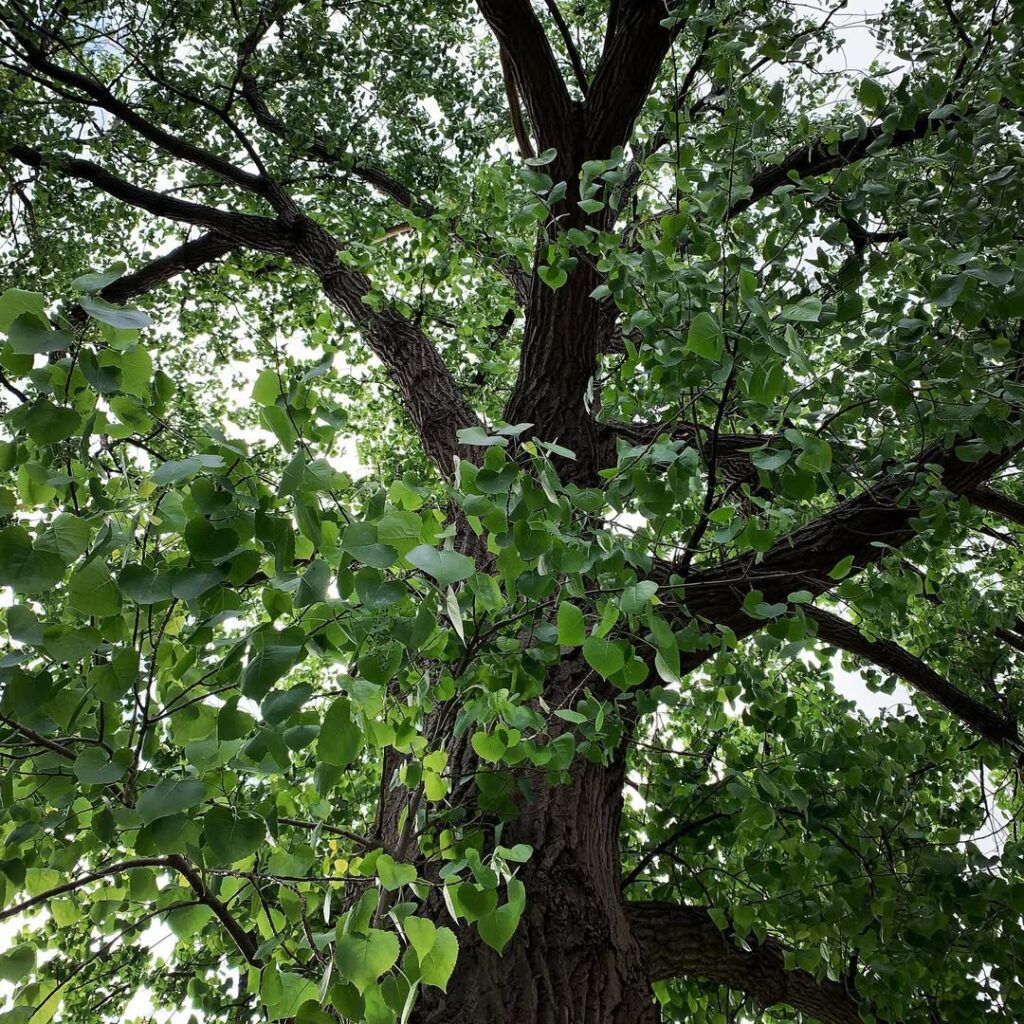
The Eastern Cottonwood stands as Kansas’s official State Tree, representing one of North America’s fastest-growing native species. This impressive tree can reach heights of 100 feet or more, distinguished by its triangular, sharply-toothed leaves that flutter in the slightest breeze on flattened stems. Its smooth, yellow-green bark gradually transforms to deeply grooved gray bark as it matures.
Thriving in riparian environments across eastern, central, and southwestern United States, the Eastern Cottonwood plays a vital ecological role in stabilizing riverbanks and preventing erosion. Its extensive root system and rapid growth make it invaluable for flood control and wildlife habitat, while its lightweight yet strong wood has been prized for centuries by Native Americans and settlers for canoes, construction, and modern industrial applications. These trees consume approximately 200 gallons of water daily, making them excellent indicators of nearby water sources.
- Hardiness: USDA Zones 2-9
- Light: Full sun
- Water: High moisture requirements; thrives with consistent water access
- Soil: Moist, well-draining soils; tolerates flooding and wet bottomlands
- Fertilizer: Low requirements; benefits from rich, organic soils
- Pest/Disease Resistance: Moderate; susceptible to cankers and leaf diseases in stressed conditions
- Growth Rate: Very fast; 0.7-1 inch diameter increase annually
Honey Locust
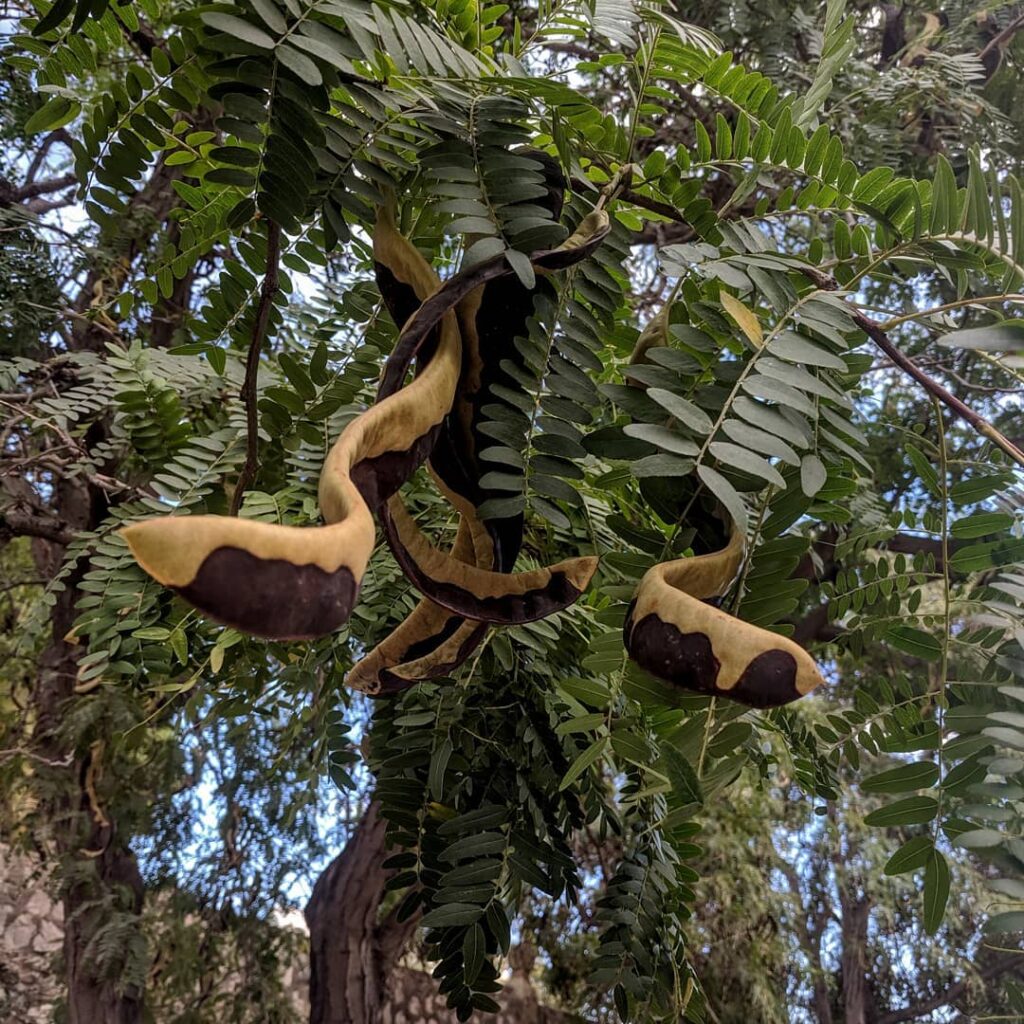
The Honey Locust is a distinctive Kansas native tree that reaches impressive heights of 20-30 meters with a characteristically thorny trunk adorned with purplish-brown spines up to 12 inches long. This adaptable species produces greenish-yellow flowers in late spring, followed by twisted seed pods containing sweet pulp that attracts wildlife. Its open canopy structure and late spring leaf emergence make it particularly valuable for urban landscapes.
With its moderate growth rate and exceptional tolerance of harsh conditions, the Honey Locust thrives where other trees struggle, making it an excellent choice for street plantings and parking areas. The tree’s seasonal interest includes attractive yellow fall color and unique pod formations, while its moderately dense wood provides valuable fuel with high heat yield. The tree’s zigzag pattern twigs are red-brown and shiny, adding distinctive winter interest to the landscape.
- Hardiness: USDA zones 3-9, extremely tolerant of urban conditions including pollution and compacted soils
- Light: Full sun to partial shade, performs best in full sun exposure
- Water: Drought tolerant once established, requires minimal supplemental watering
- Soil: Adaptable to various soil types including clay, sand, and alkaline soils; tolerates poor drainage
- Fertilizer: Low maintenance, rarely requires fertilization due to nitrogen-fixing capabilities
- Pest/Disease Resistance: Generally resistant to most pests and diseases, occasional issues with borers
- Growth Rate: Moderately fast, reaching harvestable size within 10-15 years on good soils
Hardy Kansas Native Shrubs
Kansas native shrubs offer exceptional drought and cold tolerance while providing essential wildlife habitat, effective erosion control, and significant ecological benefits across diverse prairie landscapes. These hardy species require less maintenance compared to non-native alternatives, making them ideal choices for sustainable Kansas gardening.
Aromatic Sumac
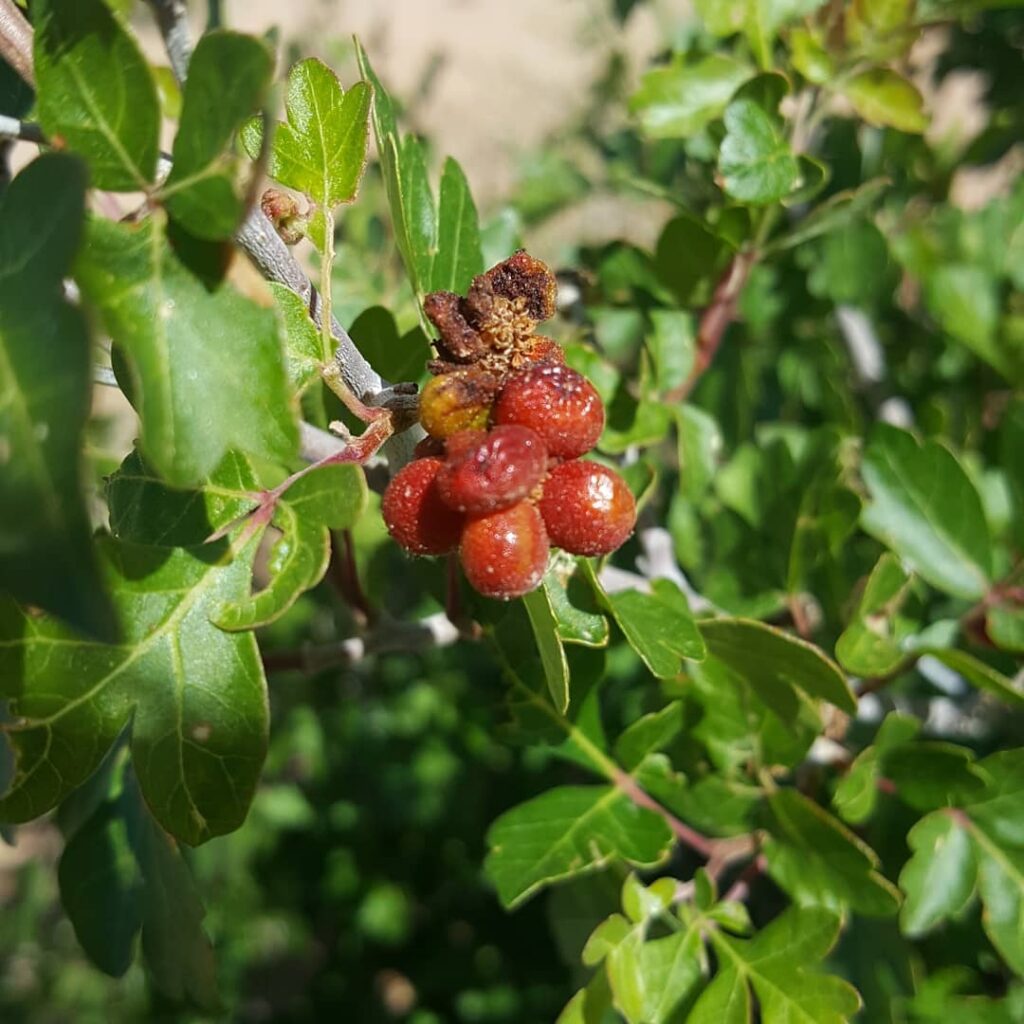
Aromatic Sumac is a versatile deciduous shrub native to Kansas, reaching 2-6 feet in height with dense, spreading growth. Despite resembling poison ivy with its trifoliate leaves, this non-toxic plant offers significant ecological value through early spring blooms that support pollinators and fuzzy red berries that persist into winter, feeding birds and wildlife.
This hardy pioneer species excels in challenging landscape conditions, making it ideal for erosion control and naturalized areas. Its aromatic foliage transforms into brilliant orange, red, and purple autumn colors, while its thicket-forming habit provides excellent wildlife cover and habitat. The shrub demonstrates high deer resistance, making it particularly valuable in areas where browsing pressure limits other plant options.
- Hardiness: Zones 3-9, extremely adaptable to Kansas climate
- Light: Full sun to partial shade, tolerates dense shade
- Water: Drought tolerant once established, prefers dry to medium moisture
- Soil: Adaptable to most soil types except poorly drained, thrives in infertile soils
- Fertilizer: None required, tolerates poor soils
- Pest/Disease Resistance: Excellent resistance, minor susceptibility to leaf spot and aphids
- Growth Rate: Moderate, spreads via root suckers to form thickets
American Hazelnut
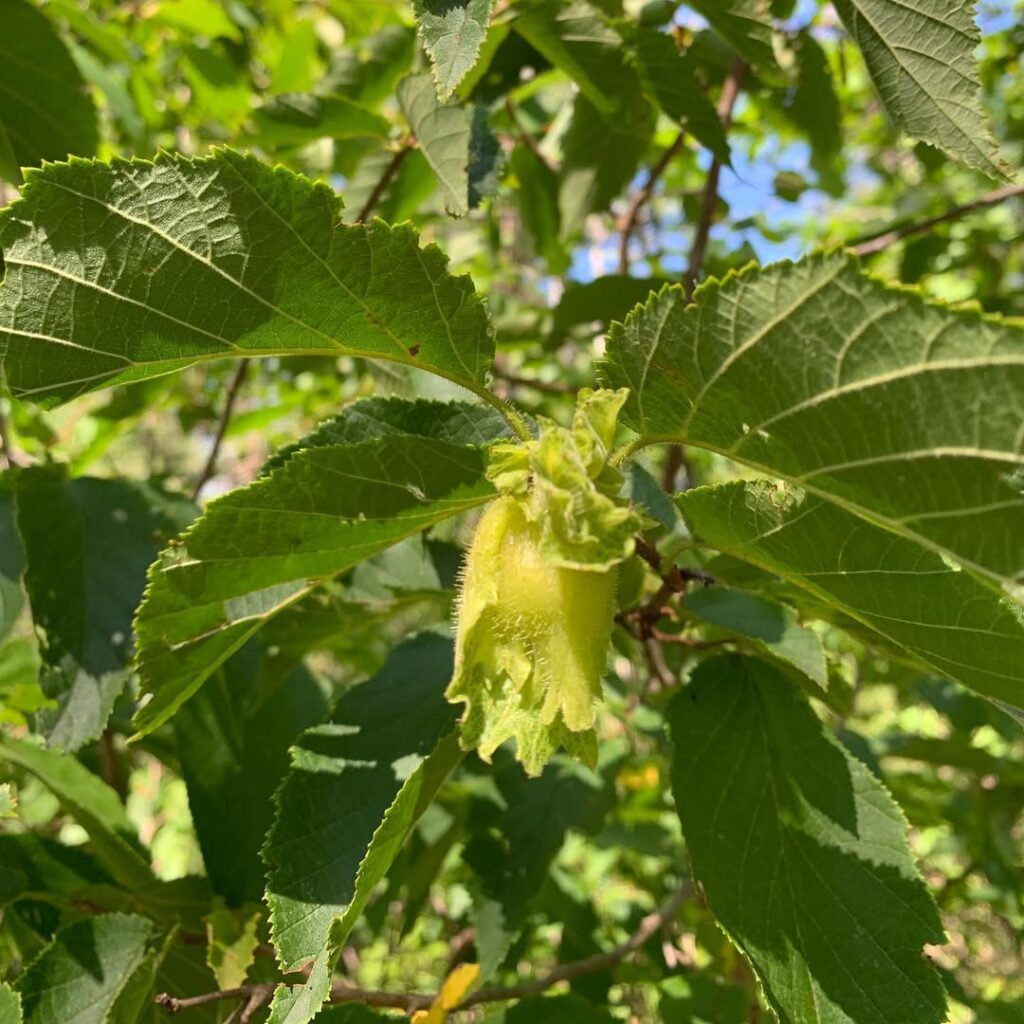
American Hazelnut is a deciduous, rhizomatous shrub native to eastern Kansas that grows 3-10 feet tall and forms attractive colonies through underground stems. This hardy native produces sweet, nutritious nuts that have been valued as food by indigenous peoples for centuries. The shrub displays slender male catkins in early spring before leaves emerge, followed by brown nuts in fall. Its dense thickets provide excellent wildlife habitat and cover, while the nuts feed squirrels, chipmunks, and birds.
Beyond its ecological value, American Hazelnut serves as an excellent landscape plant for Kansas gardens. It thrives in diverse conditions from moist woodlands to dry prairie edges, making it remarkably adaptable. The sweet kernels can be eaten raw or roasted and are rich in protein, fiber, vitamin E, and minerals. The plant’s flexible twigs make it well-suited to withstand Kansas winds and weather extremes.
- Hardiness: USDA zones 4-9, extremely cold tolerant
- Light: Full sun to deep shade, very adaptable
- Water: Moist to dry conditions, drought tolerant once established
- Soil: Rich, well-drained preferred but adapts to various soil types
- Fertilizer: Low maintenance, typically doesn’t require supplemental feeding
- Pest/Disease Resistance: Generally resistant to most pests and diseases
- Growth Rate: Moderate to fast, spreads readily through rhizomes
Elderberry
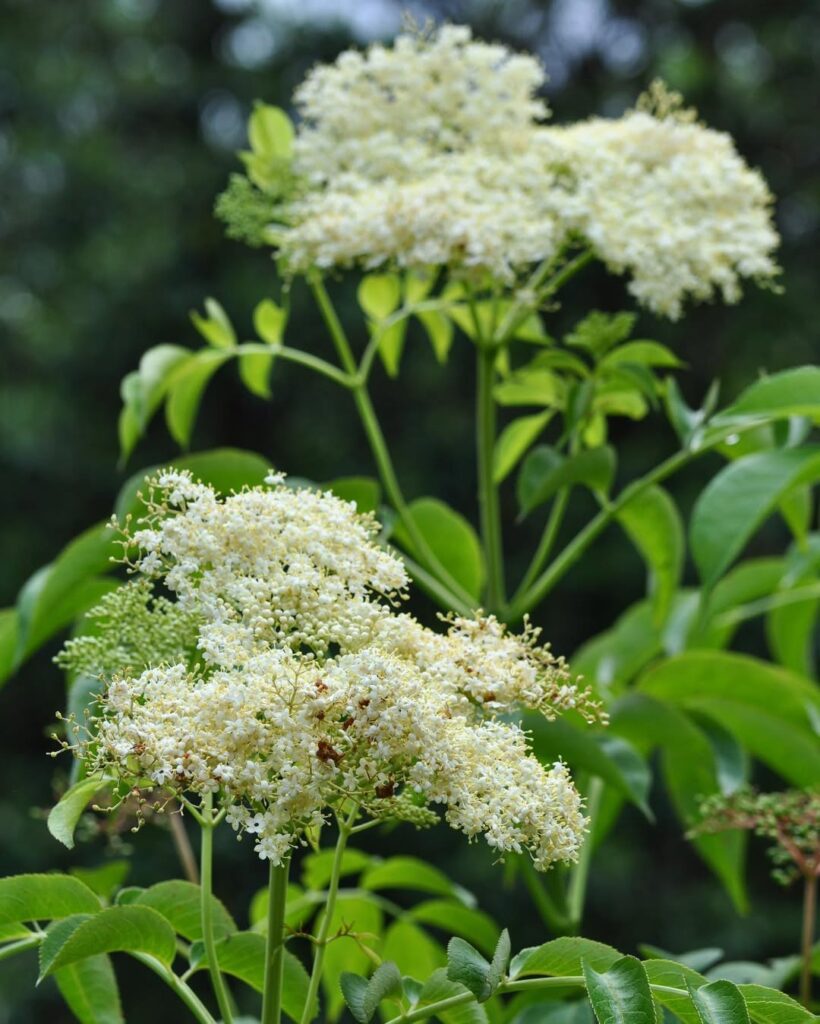
Elderberry is a versatile native Kansas shrub that thrives throughout the state except in the southwest corner. This deciduous plant typically grows 5-12 feet tall with distinctive white flower clusters in late spring followed by purple-black berries. The berries are edible and rich in vitamin C, commonly used for jams, jellies, and wine.
Beyond its culinary value, elderberry provides exceptional wildlife habitat, supporting birds, butterflies, and other pollinators. Its arching branches offer nesting cover while the berries serve as an important food source for numerous bird and mammal species. Though individual plants live only 3-5 years, new shoots consistently emerge from the rootstock, maintaining long-term stands. This fast-growing shrub is an aggressive competitor with weeds, making it an excellent choice for natural landscaping.
- Hardiness: USDA zones 3-9, native to Kansas and most of the United States
- Light: Full sun to partial shade
- Water: Prefers moist, well-drained to occasionally wet soils
- Soil: Tolerates clay, loam, sand, and high organic matter; prefers slightly acidic to neutral pH
- Fertilizer: Adapts to both rich and less fertile soils; minimal fertilizer requirements
- Pest/Disease Resistance: Generally resistant with few serious pest or disease issues
- Growth Rate: Medium growth rate, reaches mature size of 5-12 feet tall and 6-10 feet wide
Ninebark Shrub
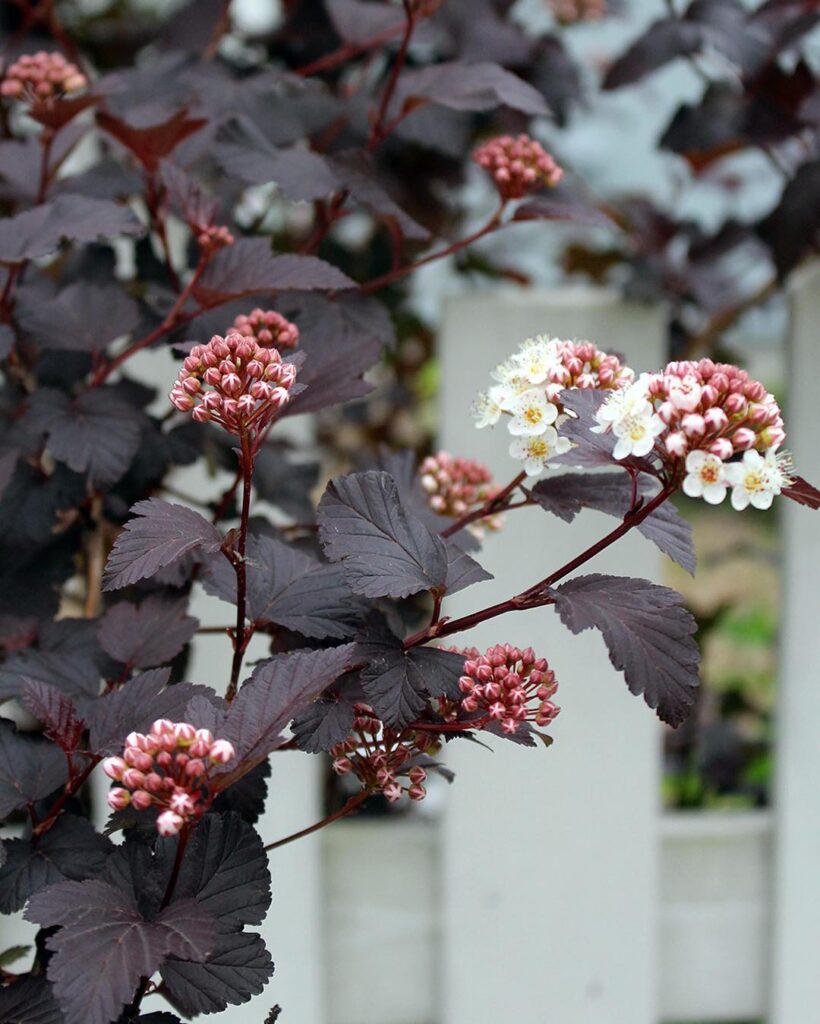
Ninebark is a versatile deciduous shrub reaching 3-10 feet tall with distinctive exfoliating bark that peels in thin vertical strips, revealing brown inner bark beneath. This fast-growing native produces clusters of white to pinkish flowers in late spring, followed by persistent red-brown fruit that adds visual interest through fall and winter.
The shrub’s three-lobed leaves provide medium green summer color before turning yellow in autumn, while its mound-shaped growth habit with arching branches creates an attractive landscape presence. Ninebark supports local wildlife by attracting pollinators, butterflies, and songbirds, while its extensive root system makes it excellent for erosion control and riparian plantings. This hardy shrub thrives in its native habitat of streambanks, rocky hillsides, and woodland edges.
- Hardiness: Zones 2-7, well-adapted to north central United States conditions
- Light: Full sun to partial shade
- Water: Drought tolerant once established, adaptable to various moisture levels
- Soil: Highly adaptable to dry sandy soils, heavy clays, and most soil types
- Fertilizer: Low maintenance, minimal fertilization required
- Pest/Disease Resistance: Excellent resistance to insects and diseases
- Growth Rate: Fast-growing with moderate growth rate
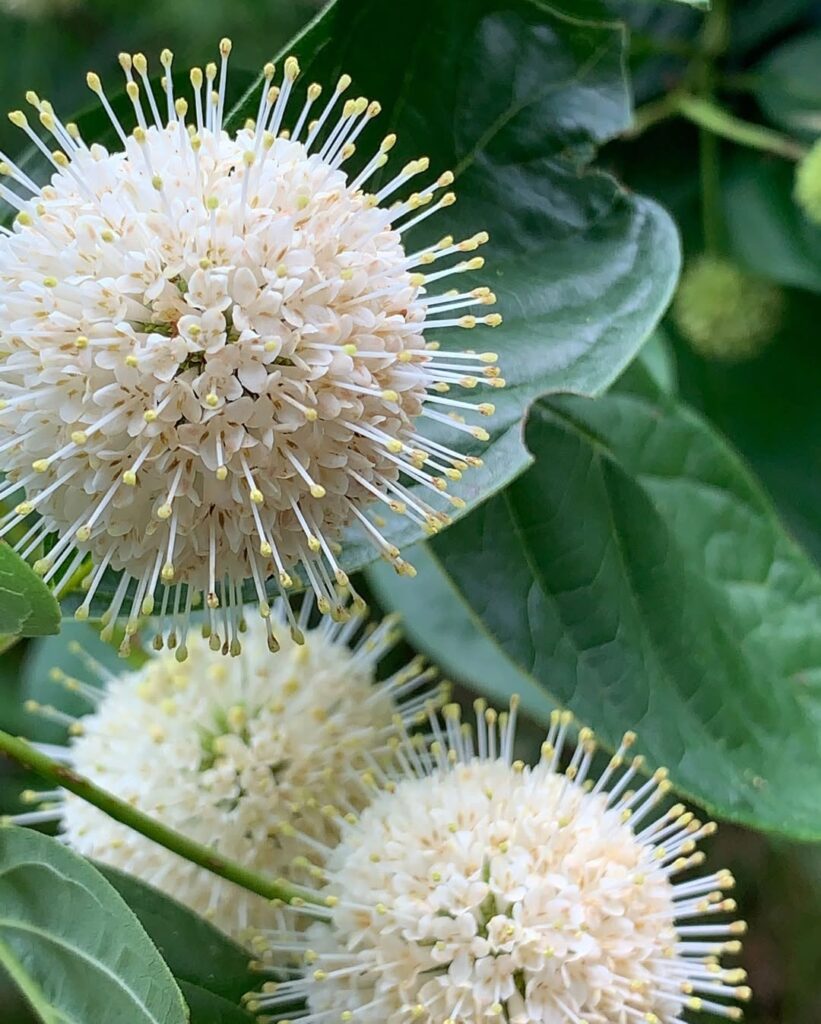
Buttonbush is a distinctive multi-stemmed deciduous shrub native to Kansas wetlands, typically reaching 6-12 feet tall with an irregular, rounded crown. Its most striking feature is the spherical, pincushion-like flower heads that bloom from June through September, displaying fragrant white to pale-pink flowers with protruding styles. The glossy dark green leaves are arranged opposite or in whorls, while the woody stems feature characteristic elongated lenticels and swollen bases.
This hardy wetland shrub thrives in consistently moist to wet conditions and can tolerate standing water up to 3 feet deep. Buttonbush serves as an excellent choice for rain gardens, pond edges, and wetland restoration projects, providing valuable habitat for pollinators, waterfowl, and other wildlife. Its extensive root system makes it particularly useful for erosion control along streambanks and water bodies. The plant produces brown nutlets that persist through winter, offering food for birds and adding winter interest to the landscape.
- Hardiness: Zones 5-9, tolerates heat and soil compaction
- Light: Full sun to partial sun; flowering reduced in heavy shade
- Water: Consistently moist to wet; tolerates standing water up to 3 feet deep
- Soil: Rich, moist soils; adaptable to various soil types but intolerant of drought
- Fertilizer: Low maintenance; minimal fertilization needed in rich wetland soils
- Pest/Disease Resistance: Good resistance; moderate deer resistance
- Growth Rate: Moderate to fast in ideal wet conditions
Selecting the Right Native Plants for Your Garden
How do you choose native plants that’ll actually thrive in your specific Kansas garden? Success starts with understanding your site’s unique conditions before you even think about planting techniques.
First, assess your sunlight exposure throughout the day. Full sun areas need prairie stalwarts like Black-eyed Susan, while shaded spots work better for woodland natives.
Here’s your site evaluation checklist:
- Test soil drainage by digging a 12-inch hole and filling it with water
- Observe existing vegetation for clues about soil conditions and moisture levels
- Note problem areas like erosion or compaction that need resilient species
Proper soil preparation sets the foundation for long-term success. Consider consulting Kansas Roots for expert-tested plant varieties that have proven hardiness in your specific region.
Frequently Asked Questions
How Do I Find Native Plant Seeds or Seedlings in Kansas?
You’ll find native plant seed sources through Kansas Native Plant Society, Urban Farmer, and Buffalo Seed Company online. Check local nurseries like National Nursery Products in Kansas City for seedlings, plugs, and wholesale options.
What’s the Best Time of Year to Plant Native Species?
Timing could make or break your native plant success. Spring’s your golden planting season for warm-season grasses, while fall works best for wildflowers. These seasonal considerations determine whether your investment thrives or fails completely.
How Much Do Native Plants Typically Cost Compared to Non-Natives?
When making cost comparison decisions, you’ll find native plants often cost more upfront than non-natives. Pricing factors include source location—specialized nurseries offer better deals than big box stores selling natives.
Do Native Plants Require Special Soil Preparation or Fertilizers?
Less is more with native plants! You don’t need special soil preparation or fertilizers since they’re adapted to local soil types. Their minimal fertilizer needs mean you’ll save money while supporting plants that naturally thrive.
How Long Does It Take for Native Plants to Establish?
The establishment timeline for native plants typically spans 1-5 years, with most considered established after their second summer. Growth factors like adequate moisture, proper soil conditions, and seasonal timing greatly influence how quickly they’ll mature in your landscape.
